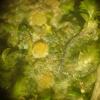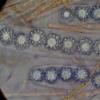
29-12-2025 17:44
Isabelle CharissouBonjour,J'aimerais savoir si d'autres personnes au

29-12-2025 17:12
 Bernard CLESSE
Bernard CLESSE
Bonjour à toutes et tous,Pourriez-vous m'aider à

12-11-2021 00:03
Lepista ZacariasHi everybody,A week ago in my fiels trip I noticed

29-12-2025 17:01
Gernot FriebesHi,I'm looking for help with this hyphomycete with

29-12-2025 08:30
Hello.A tiny ascomycete sprouting under Juniperus

29-12-2025 10:15
Hulda Caroline HolteHello, I found and collected this propoloid ascom

29-12-2025 09:38
Oskari VirtanenHi,could anyone help me identify this, I suspect P

28-12-2025 12:08
Margot en Geert VullingsThis possible Karstenia was found on the bark of d
Lamprospora ? laquelle ?
Isabelle Charissou,
29-12-2025 17:44
J'aimerais savoir si d'autres personnes auraient observé des Lamprospora sur Fissidens; des apothécies collectées le 25 décembre montrent des spores à verrues grossières (mais certaines spores semblent avoir diffirentes tailles de verrues), spores : environ 15 micron de diamètre; 5-6 verrues sur le diamètre et environ 13 sur le périmètre.
Jointe deux photos pas fameuses
Bonne fin d'année !
Nicolas VAN VOOREN,
29-12-2025 17:57

Re : Lamprospora ? laquelle ?
Ça ressemble aux spores de Lamprospora tuberculata, mais cette espèce vient sur Pleuridium.
Il y a de bons spécialistes des bryoparasites sur ce forum, je suis certain qu'ils pourront donner un meilleur éclairage.
Il y a de bons spécialistes des bryoparasites sur ce forum, je suis certain qu'ils pourront donner un meilleur éclairage.


